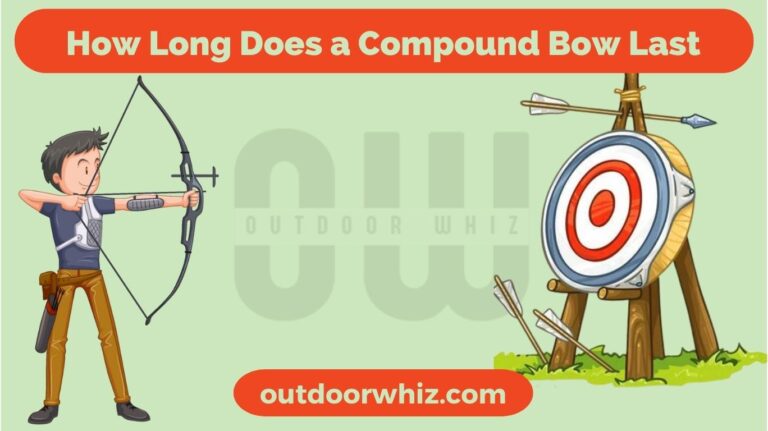Choosing the right arrows for your bow is essential for both accuracy and safety in archery. Selecting the correct arrows can make the difference between hitting your target or missing it altogether.
In this article, we’ll walk you through the process of selecting the right arrows for your bow, including how to understand arrow spine, determine draw weight and length, select the right arrow point, consider arrow material and finish, evaluate fletching and nocking options, and fine-tune your arrows.
Whether you’re a beginner or an experienced archer, choosing the right arrows is essential to hitting your target and having a successful and enjoyable archery experience.
Page Contents
How to Choose arrows For Your Bow
It’s essential to keep in mind that an arrow that is too stiff or too flexible for your bow will not perform correctly and might even result in injury. To determine the correct arrow spine for your bow, you will have to measure it using a spine tester or a flex test.
Additionally, draw weight and length also play a vital role in determining the correct arrow length and weight for your specific needs. Longer arrows can increase accuracy but also increase wind drag.
On the other hand, shorter arrows can reduce wind drag but decrease accuracy. Understanding these nuances is key in making the right decision.
1. Understanding Arrow Spine
Arrow spine is the stiffness of the arrow shaft, and it’s one of the most critical factors to consider when choosing arrows. The spine of an arrow is what determines its ability to flex and straighten as it is shot from the bow, which ultimately affects the arrow’s trajectory and accuracy. In simple terms, the arrow spine is a measurement of how much an arrow bends or flexes under a certain amount of force.
It is important to understand that the arrow spine must match the bow that it is being used with. If the arrow spine is not a good match for the bow, the arrow will not perform correctly. If the spine is too weak, the arrow will not be able to absorb the energy from the bow, resulting in poor accuracy and a decrease in arrow speed. On the other hand, if the spine is too stiff, the arrow will not bend enough, which can cause the arrow to leave the bow at an angle, causing poor accuracy and even injury.
How to Measure Arrow Spine and Choose the Right Spine for your Bow
Measuring arrow spine can be done by using a spine tester or a flex test. A spine tester is a tool that allows you to measure the amount of flex in an arrow by clamping the arrow in the middle and applying a weight to the tip. A flex test is a method where you measure the amount of flex in an arrow by holding it at the nock end and applying pressure to the tip. Once you have determined the correct arrow spine for your bow, you can then choose the right arrow based on that measurement.
When choosing an arrow, it’s important to consider the arrow spine in relation to the bow that it will be used with. It’s recommended to use arrows with a spine that is within 5-10% of the recommended spine for your bow. Additionally, you can also choose to match the arrow spine with the draw weight of your bow. A good rule of thumb is to match the arrow spine with the draw weight of your bow to ensure that the arrow is not too stiff or too weak for your bow.
2. Determining Draw Weight and Length
When it comes to choosing the right arrows for your bow, determining the correct draw weight and length is just as important as understanding the arrow spine. Draw weight is the amount of force you need to pull the bowstring back and is measured in pounds. Draw length, on the other hand, is the distance from the back of the bow grip to the front of the arrow rest when the bowstring is fully drawn, and it’s measured in inches.
When selecting arrows, it is important to choose ones that are the correct length and weight for your specific needs. Draw weight and length both impact the performance of the arrow and selecting the wrong weight or length can result in poor accuracy and reduced arrow speed. For example, longer arrows can increase your accuracy, but they also increase wind drag. Meanwhile, shorter arrows can reduce wind drag but decrease accuracy.
How to Measure Your Draw Weight and Length
Measuring your draw weight and length is relatively simple. You can measure your draw weight by pulling the bowstring back and using a draw weight scale to determine how much weight you are pulling. To measure your draw length, you can use a tape measure to measure the distance from the back of the grip to the arrow rest when the bowstring is fully drawn. It’s essential to measure your draw weight and length correctly because even a small difference in measurement can result in a significant difference in the performance of your arrows.
Once you’ve determined your draw weight and length, you can use these measurements to choose the right arrow length and weight for your specific needs. As a general rule, it’s recommended to choose arrows that are within 5-10% of the recommended weight and length for your bow. Additionally, you can also experiment with different arrow lengths and weights to see which ones work best for you. Keep in mind that it’s essential to choose arrows that are the correct weight and length for your specific needs, as it will make a huge difference in the performance of your arrows, and ultimately your accuracy.
How to Choose the Right Arrow Length and Weight for your Needs
Overall, determining your draw weight and length and choosing the right arrow length and weight for your specific needs is an essential step in selecting the perfect arrows for your bow.
It can take a bit of trial and error, but once you find the right combination, you’ll be able to see a significant improvement in your accuracy and overall performance.
3. Selecting the Right Arrow Point
When it comes to choosing the right arrow point, there are several different options available.
Types of Arrow Points
The most common types of arrow points include field points, broadheads, and judo points.
Field points are the most basic type of point and are used primarily for target shooting. They are typically made of steel and have a simple, cylindrical shape. Field points are an excellent choice for practice and competition, as they are accurate and easy to use.
Broadheads, on the other hand, are designed for hunting and have a wider cutting surface to cause more damage. They come in different designs such as fixed or mechanical, each has its own advantages and disadvantages. Fixed broadheads are simpler, more reliable and can cause more damage, while mechanical broadheads are more complex and have the ability to expand on impact. However, they can be more difficult to tune and are typically more expensive than fixed broadheads.
Judo points are a combination of field points and broadheads and can be used for both target shooting and hunting. They feature a sharp, tapered point that is designed to stick into targets without causing excessive damage, making them perfect for both target practice and small-game hunting. They also have a much smaller cutting diameter as compared to broadheads which makes them more efficient in terms of penetration.
Ultimately, the type of arrow point you choose will depend on your intended use. If you’re primarily using your bow for target shooting, field points are an excellent choice. However, if you’re planning to use your bow for hunting, you may want to consider broadheads or judo points. When choosing an arrow point, it’s essential to weigh the pros and cons of each type and consider your intended use before making a final decision.
4. Considering Arrow Material and Finish
Arrows are typically made from a variety of materials, including aluminum, carbon, and wood. Aluminum arrows are the most basic and affordable option and are often used by beginners or for target shooting. Carbon arrows, on the other hand, are more expensive but offer better performance and durability.
They are often used by hunters and competitive archers. Wood arrows are the traditional option and offer a unique aesthetic appeal. However, they are not as durable or consistent as aluminum or carbon arrows. The material of an arrow can have a significant impact on its performance.
Aluminum arrows are lightweight and can be bent or damaged easily.
Carbon arrows are stronger and more durable, but they also tend to be more expensive.
Wood arrows are traditional and offer a unique aesthetic appeal, but they are not as durable or consistent as aluminum or carbon arrows.
In terms of finishes, painted arrows are a great option for target shooting and provide a clean, professional look. Camo arrows are a good choice for hunting, as they blend in with the environment and make it harder for the game to spot the arrow. Other finishes such as glossy, matte or textured, can also be chosen based on personal preference or specific requirements.
5. Evaluating Fletching and Nocking Options
Fletching and nocking are two important components of an arrow that help to stabilize and control the trajectory of the arrow during flight. Fletching refers to the feathers or vanes that are attached to the back of the arrow, while nocking refers to the mechanism that holds the arrow in place on the bowstring. Both fletching and nocking play a crucial role in determining the accuracy and consistency of the arrow’s flight, making them essential components for any archer.
Types of Fletching and Nocking
There are several different types of fletching and nocking options available, each with their own unique benefits and drawbacks. Some of the most popular fletching options include feathers and vanes, which can be made from a variety of materials and come in a variety of shapes and sizes. Nocking options include traditional nocks, which are inserted into a groove on the arrow shaft, and modern nocks, which are attached to the arrow shaft with a nocking point.
To choose the right fletching and nocking for your arrows, it’s important to consider factors such as the type of bow you’re using, the distance you’ll be shooting, and your own personal preferences. Additionally, it’s always a good idea to consult with a professional archery expert to ensure that you’re making the right choice.
6. Testing and Fine-Tuning Your Arrows
Testing and fine-tuning your arrows is an essential step in ensuring accuracy and consistency in your archery practice and competitions. It is crucial to understand that each arrow is unique and may have slight variations in weight, length, and spine. Therefore, it is vital to test and fine-tune your arrows to ensure they are performing at their best.
How to Test Your Arrow
To test your arrows, you should start by shooting them at a target from a specific distance, usually 20 yards. You should pay attention to the arrow’s trajectory and how it hits the target. Look for any inconsistencies in the arrow’s flight, such as a right or left deviation, or if the arrow is hitting too high or low. The key is to evaluate the performance of each arrow and compare it to the others. You should also check the weight and spine of each arrow, as these are essential factors in determining arrow accuracy.
Once you have evaluated the performance of your arrows, you can make adjustments to improve accuracy. For example, if the arrow is deviating to the right, you can adjust the nocking point to the left. If the arrow is hitting too low, you can adjust the arrow rest or change the point weight. It is also essential to ensure that your bow is properly tuned and that you are using the correct draw length and weight. Remember, it may take a few adjustments to find the perfect combination for your arrows, so patience and perseverance are key.
Conclusion
Finally, choosing the right arrows for your bow is an important step in ensuring accurate and safe shooting. By considering factors such as the weight, length, and material of the arrows, as well as the draw weight and draw length of your bow, you can ensure that you have the best arrows for your specific needs.
It is important to take the time to carefully choose the right arrows for your bow, as the right arrows can make a big difference in your shooting performance. For those who want to learn more about arrow selection, there are many resources available online, including articles and videos that provide detailed information on the different types of arrows and how to choose the right ones for your bow.






